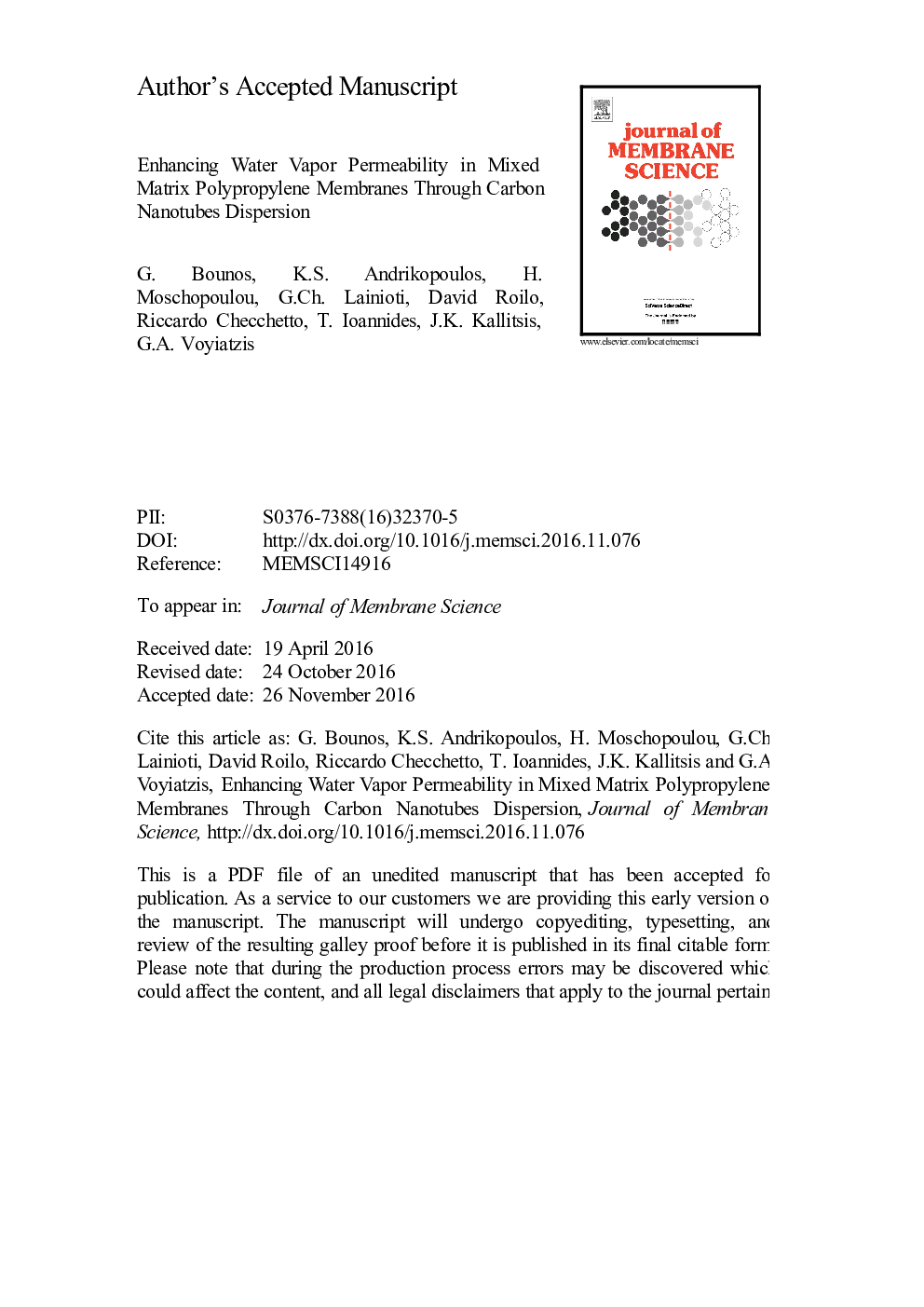| Article ID | Journal | Published Year | Pages | File Type |
|---|---|---|---|---|
| 4989243 | Journal of Membrane Science | 2017 | 32 Pages |
Abstract
The water vapor and gas permeability of mixed matrix membranes (MMMs) composed of multiwalled carbon nanotubes (MWCNTs) dispersed in isotactic polypropylene (i-PP) was examined. The agglomeration state of the anisotropic filler nanoparticles was monitored by Raman spectroscopy and optical/electron microscopy in samples with different filler concentration and filler-matrix compatibility. The water vapor permeability of the MWCNT-MMM increases with the filler content up to a critical concentration. At larger MWCNT concentrations the composite membranes becomes water impermeable: filler aggregates or/and labyrinth-type networks form and act as traps for migrating water. Using functionalized PP-chain grafted MWCNTs (MWCNT-g-PP) at 4Â wt% critical concentration the water permeability increases by a factor â¼ 35 compared to the pure i-PP membranes. The transport rate of light gases (N2, H2, CH4 and CO2) is not affected by the filler loading and dispersion. The selective enhancement of the water transport rates in the slightly altered i-PP matrix is attributed to the formation of regions consisting of well dispersed MWCNT interconnecting surrounding polymer layers with enhanced water permeability. The potential of such type of CNT-based polymer composite membranes is obvious for advanced filtration and separation applications.
Related Topics
Physical Sciences and Engineering
Chemical Engineering
Filtration and Separation
Authors
G. Bounos, K.S. Andrikopoulos, H. Moschopoulou, G.Ch. Lainioti, David Roilo, Riccardo Checchetto, T. Ioannides, J.K. Kallitsis, G.A. Voyiatzis,
